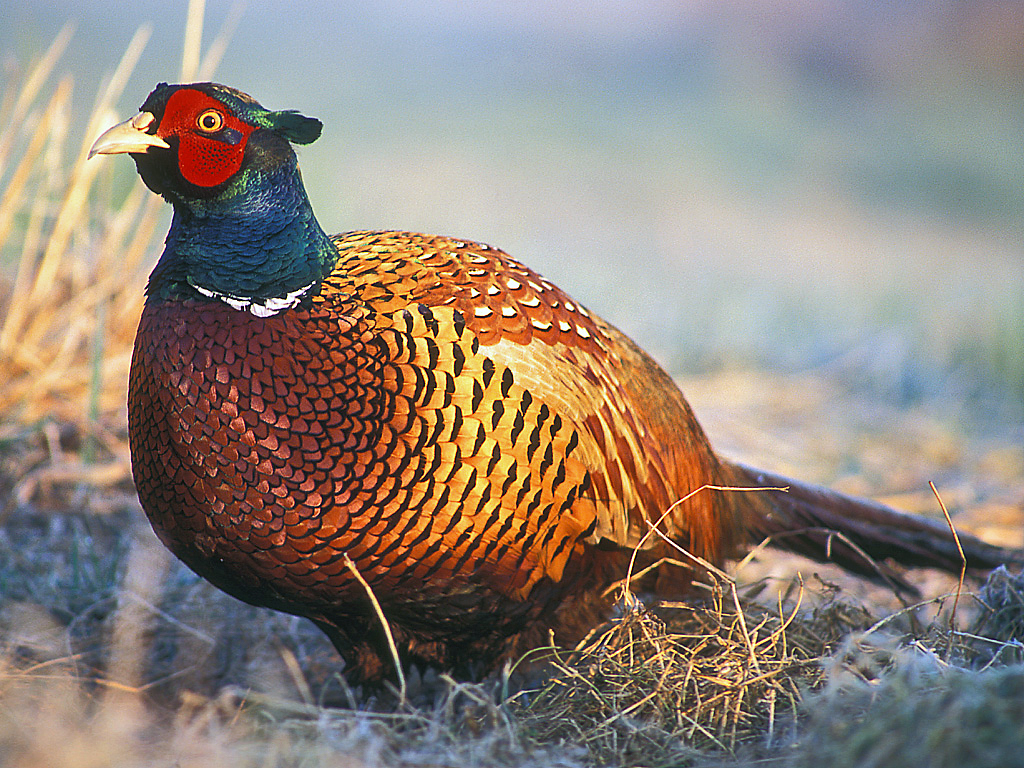Signalling with colour
In nature, plants and animals use colours in many different ways. When it’s time to mate, many of them take on brighter colours. This is to make them more visible as well as to impress both partners and rivals. The pheasant cocks around Malmö Museums become particularly colourful in the spring before becoming colourless again to blend in better with their surroundings after the mating season.

Photo: Lukasz-Lukasik-CC-BY-SA
Colour as camouflage, warning, temperature regulation or mood
Different colours can also be used both as camouflage and as a warning signal. Some colours help to maintain the right temperature and to protect against parasites. For many animals, these changes happen automatically at certain times of the year, such as when hares get their white winter coats. White provides better protection against the hungry eyes of predators when there is snow.
Other species can actively change colour and appearance as needed. Fish, reptiles and cephalopods have cells that contain several types of colour pigments. Such cells are called chromatophores. By causing these chromatophores to swell or contract, the animal can change its colour and appearance.
Many animals, like this hare, change colour to better camouflage themselves, along with the changes of seasons.
Photo: Bouke-ten-Cate-CC-BY-SA
Poison dart frogs have bright colours to warn others: don't eat me!
Photo: H.-Krisp-CC-BY
The anole lizard displays its colourful throat, both as a warning to other males, and to impress females.
Photo: Gailhampshire-CC-BY
In less than a second, the broadclub cuttlefish is able to change both colour and structure of its skin.
Photo: Nick-Hobgood-CC-BY-SA
All octopuses are masters of camouflage, but they are also able to change their colours depending on mood. This is a way for the octopus to warn others that it is irritated.
Photo: Johanna-Rylander-Malmö-Museer
Cephalopods that change colour or glow in the dark
Cephalopods, like octopus and cuttlefish, are very good at this and can change their appearance quickly. As well as adapting to different surfaces and hiding, they can also use chromatophores to intimidate and surprise enemies or prey. Some cephalopods can chemically emit light to attract prey, to entice mating partners or to communicate with other cephalopods. This is called bioluminescence.
Chameleons mostly use their colours to communicate or regulate their temperature - and not to camouflage themselves. But the green ground colour in many chameleons, helps to blend in.
Photo: Mr.-Shambulingu-CC-BY-SA
The spots on the three-horned chameleon's body get bigger and more apparent when the chameleon is angry or annoyed.
Photo: Benjamin-Klingebiel-CC-BY-SA
Female panther chameleons get very dark after mating, to show other males that they are no longer interested in mating.
Photo: Roland-zh-CC-BY-SA
Chameleons express emotions with colour
Chameleons are lizards known for their colour changes. It is often said that chameleons change colour to camouflage themselves. The animals themselves may normally be camouflaged, often green, but the colour changes are not primarily a matter of blending in with the background. Instead, it is the chameleon’s emotional state that usually drives the colour changes. If they feel threatened by other chameleons, they change colour to scare them away.
Colour changes also signal the chameleon’s willingness – or unwillingness – to mate. In addition, chameleons regulate their temperature by darkening so they can absorb more sunlight and get warmer. If they are too warm, they instead turn lighter, to reduce the impact of the sunlight.